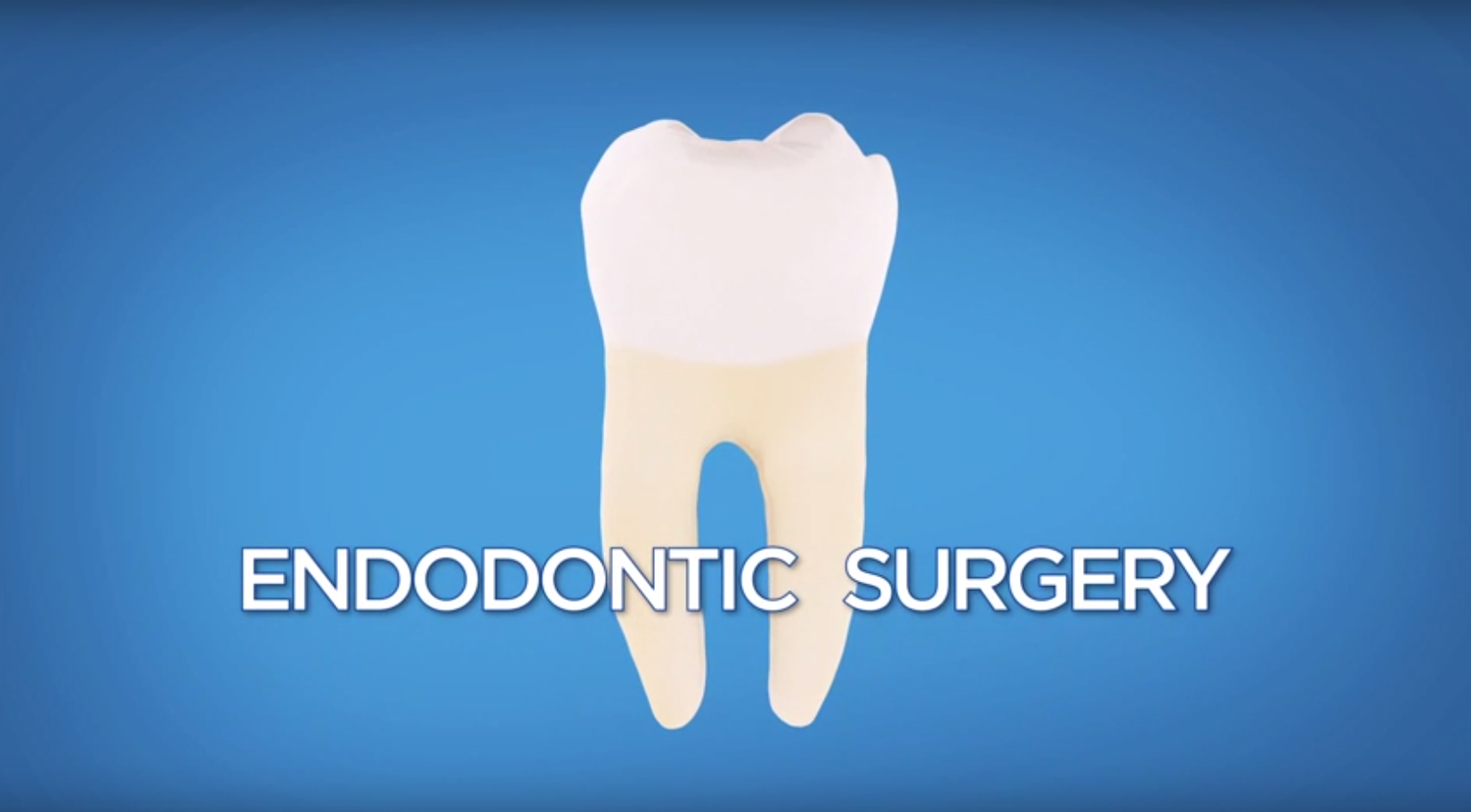Endodontic Microsurgery
Non-surgical endodontic treatment is successful in a vast majority of cases. Occasionally, this non-surgical procedure will not be sufficient to heal the tooth and your endodontist will recommend surgery. Endodontic surgery can be used to locate fractures or hidden canals that do not appear on x-rays but still manifest pain in the tooth. Damaged root surfaces or the surrounding bone may also be treated with this procedure. The most common surgery used to save damaged teeth is an apicoectomy or root-end resection.
Endodontic microsurgery is a surgical procedure utilizing a sophisticated operating microscope and special microsurgical instruments. The increased magnification and illumination greatly improves diagnostic capabilities and the precision of surgical procedures. Long term prognosis is enhanced and post-surgical trauma is reduced. The most common surgery used to save damaged teeth is an apicoectomy or root-end resection.
The following video illustrates this simple procedure.
An incision is made in the gum tissue to expose the bone and surrounding inflamed tissue. The damaged tissue is removed along with the end of the root tip. A root-end filling is placed to prevent reinfection of the root and the gum is sutured. The bone naturally heals around the root over a period of months restoring full function. This procedure is done under high magnification using the surgical microscope. It allows the Doctor to see detail not visable with the naked eye.
Following the procedure, there may be some discomfort or slight swelling while the incision heals. This is normal for any surgical procedure. To alleviate any discomfort, an appropriate pain medication will be recommended. If you have pain that does not respond to medication, please call our office.

